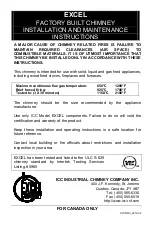
Technical Manual
Airbridge BTS3612A CDMA Base Station
System Principle
Chapter 4 Antenna & Feeder Subsystem
4-7
4.3.2 Antenna
I. GPS antenna
The GPS antenna is an active antenna. L1 band (1565~1585MHz) GPS signals
received by the antenna are filtered by a narrow-band filter and amplified by a
preamplifier. Then they are sent to a GPS receiver integrated in the BCKM.
II. GPS/GLONASS dual-satellite antenna
The GPS/GLONASS dual-satellite antenna is also an active antenna. It receives both
L1 GPS and GLONASS signals (1602~1611MHz).
4.3.3 Feeder
Normally, standard 1/2 inch or 7/8 inch feeders are used to connect the antenna and
the cabinet. In site installation, 7/16DIN connectors should be prepared based on the
actual length of feeders.
Three grounding cable clips for lightning protection should be applied at the tower top
(or building roof), feeder middle, and the end close to the cabinet-bottom. If the feeder
is excessively long, additional cable clips are needed.
Since the 7/8 inch feeder should not be bent, the tower top (or building roof) antenna
and the feeder, the cabinet and the feeder should be connected via jumpers. The
jumpers provided by Huawei are 1/2 inch, 3.5m long, with 7/16DIN connectors.
The feeder is mainly used to transmit GPS/GLONASS signals received by the
GPS/GLONASS antenna to the GPS/GLONASS receiver. It also provides power for the
antenna module to make pre-amplification.
4.3.4 Lightning Arrester
Like the lightning arrester of RF antenna & feeder, the satellite uses the lightning
arrester of antenna & feeder to protect the equipment from direct lightning stroke or
inductive lightning. One feeder is configured with one lightning arrester.
4.3.5 Receiver
I. GPS receiver
There are many types of GPS receivers. The following introduces the one with 8
parallel paths.
















































